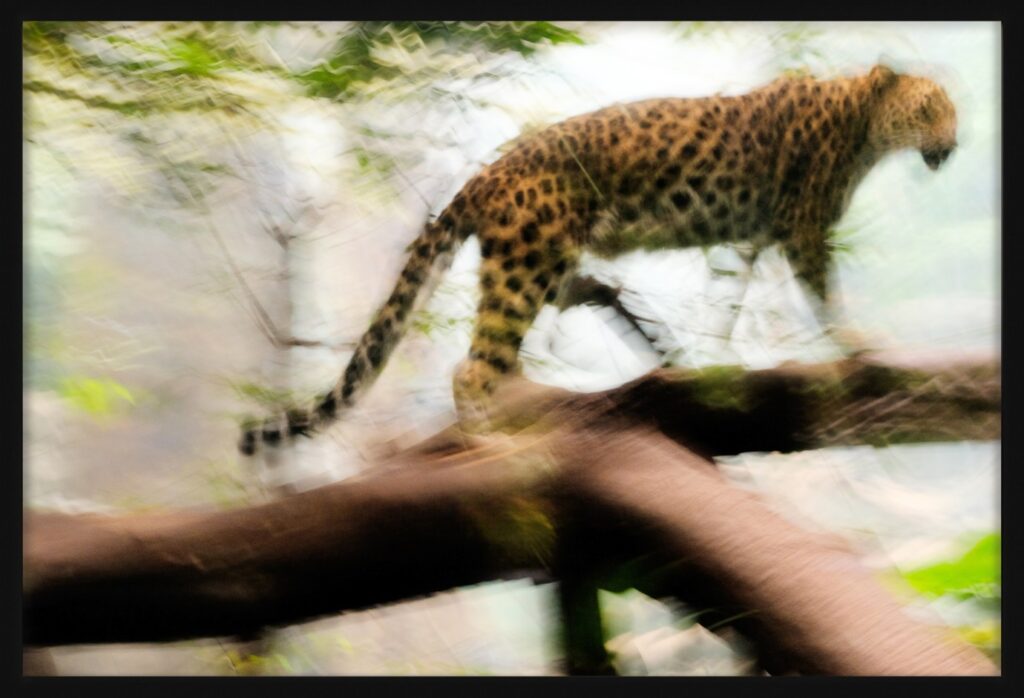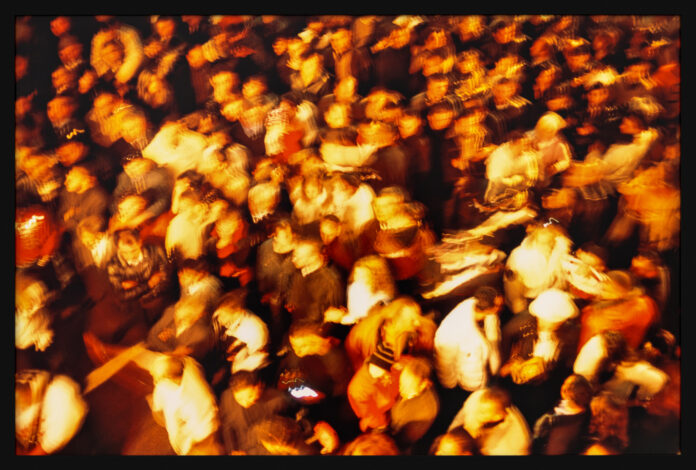“As long as memory is inaccessible, the mind is unable to change it. But as soon as a story starts being told, particularly if it is told repeatedly, it changes”
–Bessel van der Kolk, The Body Keeps the Score
Nan Goldin’s self-titled exhibition at Fraenkel Gallery (through April 29) is a poignant show about memory, addiction, and the ceaseless search to be loved and understood that stretches the potential of images to reflect subconscious topographies.
The photo-slideshow is Goldin’s true medium, and the keystone to understanding the power of her art practice since The Ballad of Sexual Dependency put her on the global art world map. In the back room of the exhibition, her new 25-minute video Memory Lost includes images taken by Goldin of herself, her surroundings, and her friends during her long struggle with an addiction to opioids. Another kind of dependency—one painfully documented in Laura Poitras’ award-winning 2022 film All the Beauty and the Bloodshed—but many quintessential themes of her work carry through.
The images in Memory Lost are powerful on their own, but their sequence and the audio that accompanies them is what makes the work greater than the sum of its parts. The score contains music composed specifically for the slideshow, clips from interviews she conducted with friends who’ve also grappled with addiction, as well as phone messages from Goldin’s friends recorded in the 1980s from her own voicemail. Rather than narrate the images directly, the photographs and sound overlay to open more pathways for meaning as we are brought into the quotidian drug deals, profound thoughts, intimacy, agony, withdrawal, loneliness, and the incalculable abysses that surround life and addiction.

This film is far from “easy listening,” but it is unquestionably worth watching. Memory Lost contains images of ghostly saturated landscapes, intimate interiors, portraits, as well as drug use and its material and psychological aftershock. Photographs of mysterious skies, birds in flight, horses and close-up photographs of subjects within ancient classical artwork also recur as allegories or equivalents to expressive states. The cast of characters might be familiar to those who have followed Goldin’s earlier work or the crowd of legendary queer artists that she photographed and spent time with (Cookie Mueller and David Wojnarowicz, to name two), but you need not recognize her subjects to be deeply moved by the work.
Photography surrounding themes of addiction can easily veer towards exploitative, but Goldin’s nuanced approach is empathetic and vulnerable.The artist has captured her friends and environs in a way that only someone who has genuine love for their subjects and has been through it themselves can. Goldin includes photographs made throughout the whole winding journey of her addiction, which spans decades and refuses orderly resolution—both in the images’ nonlinear sequence and structure of the film’s repeating loop.
One of Goldin’s biggest artistic contributions, carried through in this piece, is her ability to carve out a space for personal histories and emotional landscapes of daily life to belong in a fine art context. What is the special sauce that allows Goldin’s photographs to take on a meaning beyond the quotidian, and give voice to larger thematic archetypes?

For one, Goldin has harnessed the power of the “poor image.” Not only does her approach to photography force us to interrogate the imposed supremacy of sharp, high-resolution photographs, but the work opens up new doors to abstraction and immediacy both in our viewing experience and in the medium as a whole. Intermittent images with blurred focus and camera shake might record the photographer’s literal instability from substance use, but these varying levels of abstraction deployed strategically in the slideshow also recall and transmit feelings encapsulated in the moment they were photographed, and allow space for us to project our own experiences and subjectivities.
After watching Memory Lost, the trancelike parade of photographs in the exhibition carry more of the emotional residue generated by the slideshow. Dye-sublimation prints on aluminum have a subtle metallic glow, using a printing strategy from commercial sign-making to signify complex motifs that resist a singular interpretation. How do we begin to fill the void of the gaps in memory created by trauma, addiction, and human fallibility? If we agree with Susan Sontag’s statement that “photographs are not so much an instrument of memory as an invention of it or replacement,” Goldin’s exhibition approaches the elusiveness of memory and the extent of photography’s ability to pin down the intangible.
Memory, like photography, is mutable and context-dependent—but Goldin’s images serve as a mirror, allowing us to get in touch with our own emotional experiences as we look at her photographs.
NAN GOLDIN through April 29 at Fraenkel Gallery, SF. More info here.





